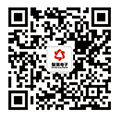
The Internet of things has brought great progress to many industries, including construction, health and education. Of course, agriculture is no exception.
The impact of climate change, soil erosion and population growth means that producers must improve efficiency, reduce waste and adopt more environmentally friendly farming methods.
Fortunately, the Internet of things is providing novel solutions to many challenges, helping manufacturers reduce costs and provide more control and supervision of production processes.
Therefore, the Agricultural Internet of things has shown a high adoption rate and is expected to continue to grow in the next few years. In this article, we will explore some of the most common use cases of the Internet of things in agriculture today, as well as some promising developments that may appear in the future.
1. Data acquisition and precision agriculture
The Internet of things system can collect and process a large amount of data from countless sensors at a very low cost. When applied to the agricultural environment, this can provide great opportunities.
Sensors can collect data from the entire farm, such as sunlight, moisture, humidity and temperature, which can then be analyzed in real time and used to make better decisions or automate some processes. For example, if the sensor for a particular crop detects that the soil moisture content is below a certain threshold, it will send this information back to the system, and then the system will automatically turn on the sprinkler.
The name of food production supported by the Internet of things is precision agriculture, which is a concept of using the exact amount of resources needed by farms to achieve optimal growth. In the above example, through the implementation of the Internet of things, watering will be carried out only when the data determines that watering is needed, so as to reduce the waste of water resources to close to zero.
Through the implementation of precision agriculture, grain output is maximized and the amount of resources required is optimized. This leads not only to more food production, but also to cleaner agriculture and greener processes.
2. UAV
Internet of things agricultural UAV is one of the most common use cases of UAV today. They enable farmers to monitor crops on large areas of land. This can help identify any problems associated with pests or festering that, if left unchecked, could seriously damage crop yields. Today's Internet of things drones can do this by analyzing the color of crops. The darker the color, the more likely it is to have pests or diseases.
In addition to monitoring crops, drones are also used to distribute materials throughout the farm, including spraying pesticides and fertilizers on crops. All these operations can be controlled by operators on farms or remote locations. More importantly, many of these operations are being automated, such as regular crop monitoring, which means that farmers do not need to use scarce and expensive labor to perform these operations.
3. Livestock tracking
Internet of things devices are also being used for livestock. Placing a small sensor on a livestock tag can collect a large amount of useful data that can be used to optimize farm operations.
These sensors collect data such as the general health, body temperature, nutrition and location of livestock (tracking their health and location helps prevent the spread of disease).
Farmers in the meat and dairy industry can also use these tags to dynamically track how many animals are pregnant, lactating or calving, so as to know what care each animal needs in real time.
4. Intelligent Greenhouse
Traditional greenhouse creates a static environment, and its parameters are largely affected by sunlight. On the other hand, intelligent greenhouse can accurately control many variables to produce the best growth conditions.
The Internet of things sensors in the greenhouse collect variable data including temperature, humidity and soil humidity. Then, the management system analyzes these data and starts the intelligent control system when the variables need to be adjusted. For example, if the soil humidity is reduced in high temperature weather, the water spray can be started.
5. Predictive analysis
Data collected from IOT devices are increasingly used to build advanced simulation models of future agricultural production on farms. In order to run an accurate simulation, the data input into the model needs to have as high fidelity as possible. Before the widespread use of the Internet of things system becomes a reality, this largely depends on estimation or speculation. But because IOT sensors can collect large amounts of accurate data on farms, predictive analysis is now more accurate than ever.
For example, simulation using accurate data collected from Internet of things devices can simulate what happens when crops are infected with diseases. Accurate simulations can show the speed at which the disease spreads, which areas are more vulnerable to infection and, more importantly, what preventive and corrective measures can be taken to minimize damage.
6. Farm management
At the highest level, farms that support the Internet of things can provide farmers with dashboard reports and KPI analysis, just as banks or insurance companies monitor their business. This provides unprecedented data and insight, which was impossible before the emergence of the Internet of things system. Therefore, farmers now have a wealth of data to help them make better decisions, allocate resources more effectively and plan for the future.
Last thought
We are still in the early stages of the Agricultural Internet of things. As the prices of sensors, drones and processing capacity continue to decline, we expect more farms to adopt this technology. More importantly, as the pressure of climate change and water shortage increases, the Internet of things enables farmers to do more with less resources, which is more important than ever before. (compiled by iotheme)

 銷售王經(jīng)理
銷售王經(jīng)理
 微信公眾號(hào)
微信公眾號(hào)